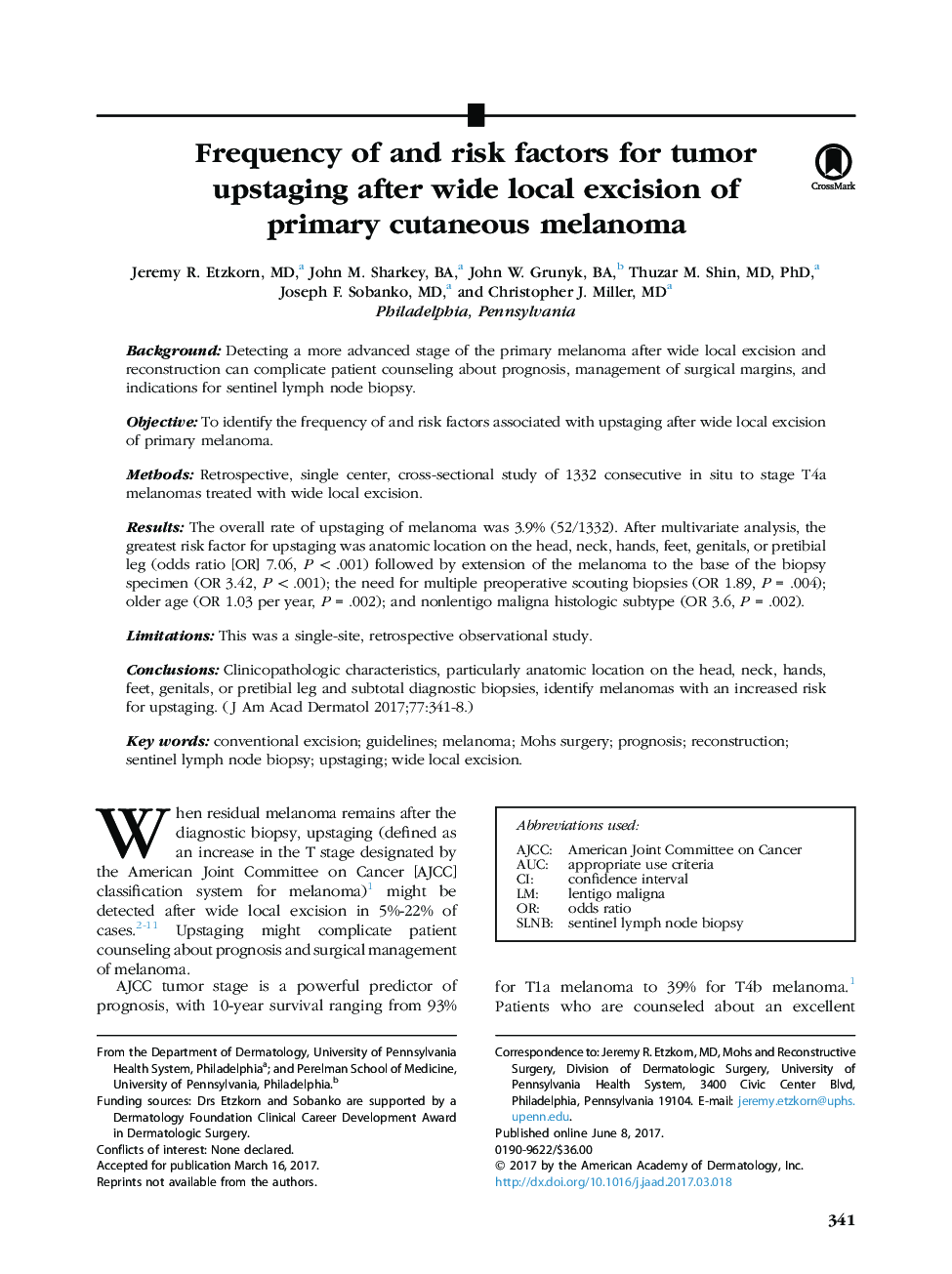| Article ID | Journal | Published Year | Pages | File Type |
|---|---|---|---|---|
| 5648668 | Journal of the American Academy of Dermatology | 2017 | 8 Pages |
BackgroundDetecting a more advanced stage of the primary melanoma after wide local excision and reconstruction can complicate patient counseling about prognosis, management of surgical margins, and indications for sentinel lymph node biopsy.ObjectiveTo identify the frequency of and risk factors associated with upstaging after wide local excision of primary melanoma.MethodsRetrospective, single center, cross-sectional study of 1332 consecutive in situ to stage T4a melanomas treated with wide local excision.ResultsThe overall rate of upstaging of melanoma was 3.9% (52/1332). After multivariate analysis, the greatest risk factor for upstaging was anatomic location on the head, neck, hands, feet, genitals, or pretibial leg (odds ratio [OR] 7.06, PÂ <Â .001) followed by extension of the melanoma to the base of the biopsy specimen (OR 3.42, PÂ <Â .001); the need for multiple preoperative scouting biopsies (OR 1.89, PÂ =Â .004); older age (OR 1.03 per year, PÂ =Â .002); and nonlentigo maligna histologic subtype (OR 3.6, PÂ =Â .002).LimitationsThis was a single-site, retrospective observational study.ConclusionsClinicopathologic characteristics, particularly anatomic location on the head, neck, hands, feet, genitals, or pretibial leg and subtotal diagnostic biopsies, identify melanomas with an increased risk for upstaging.
